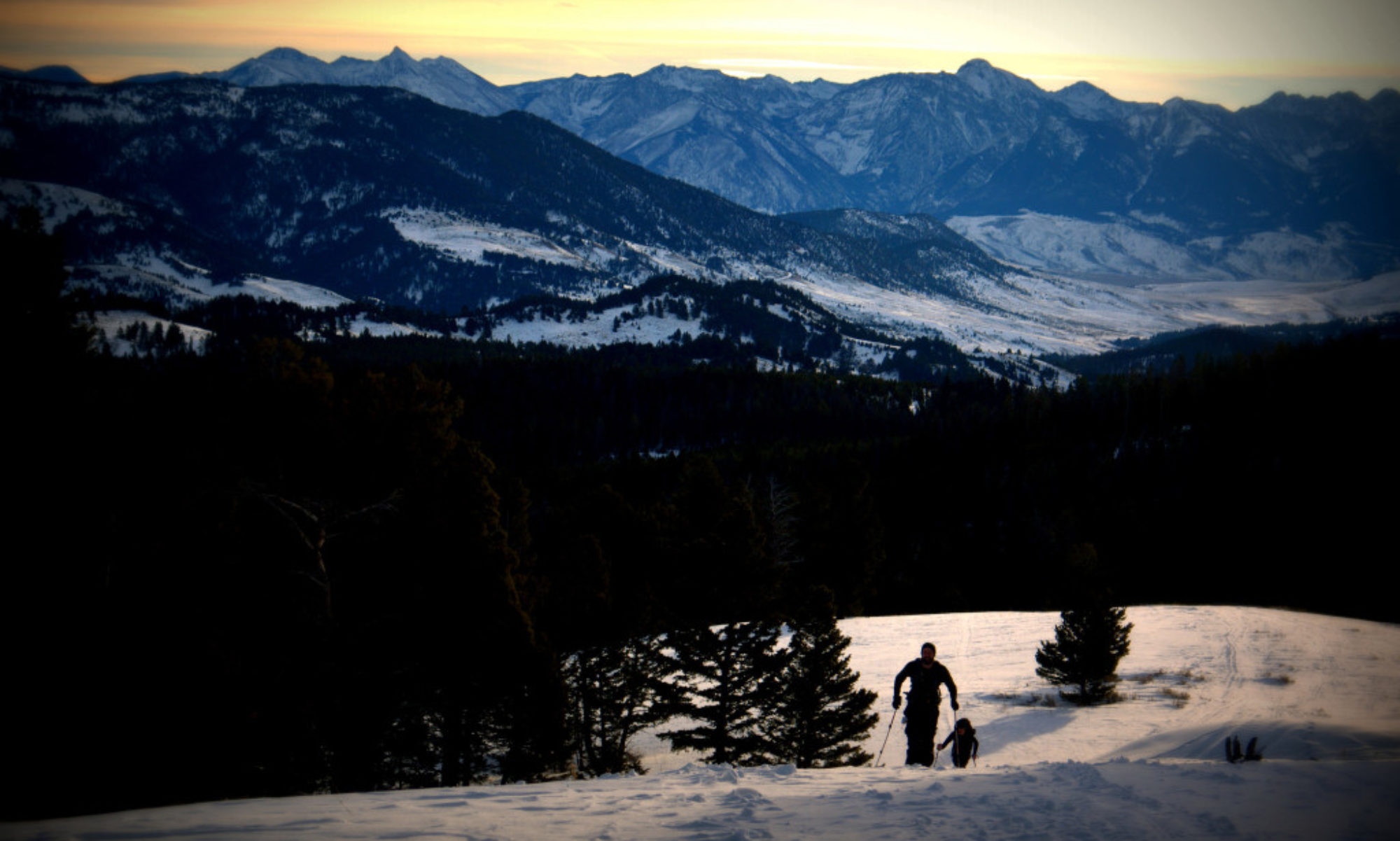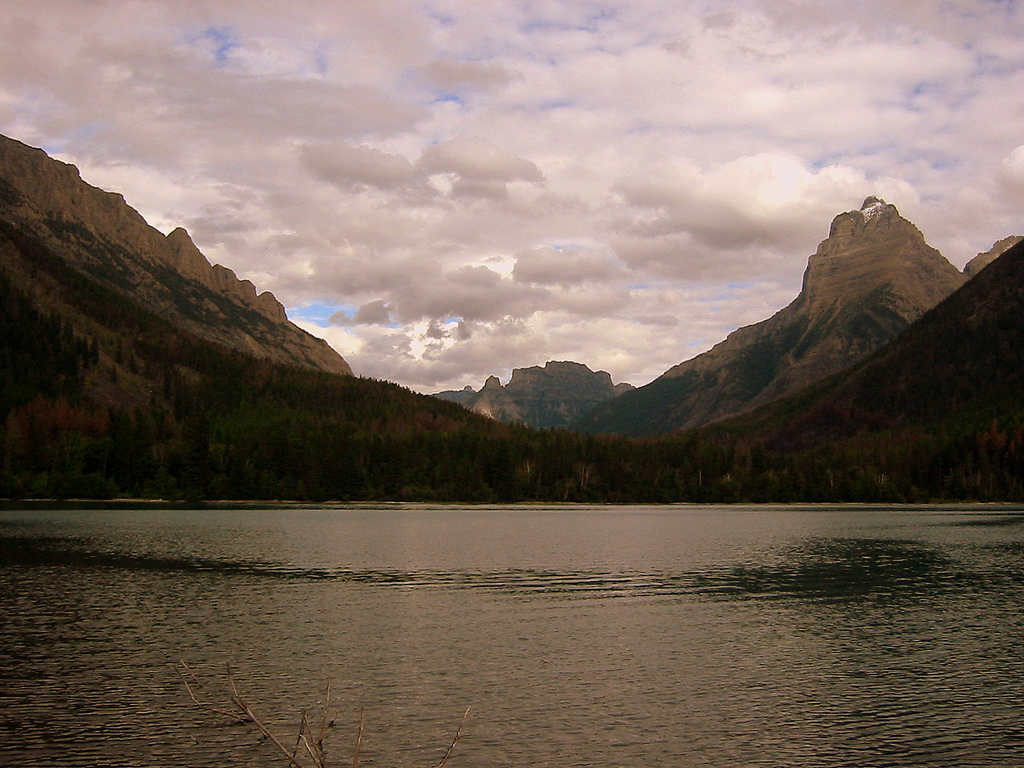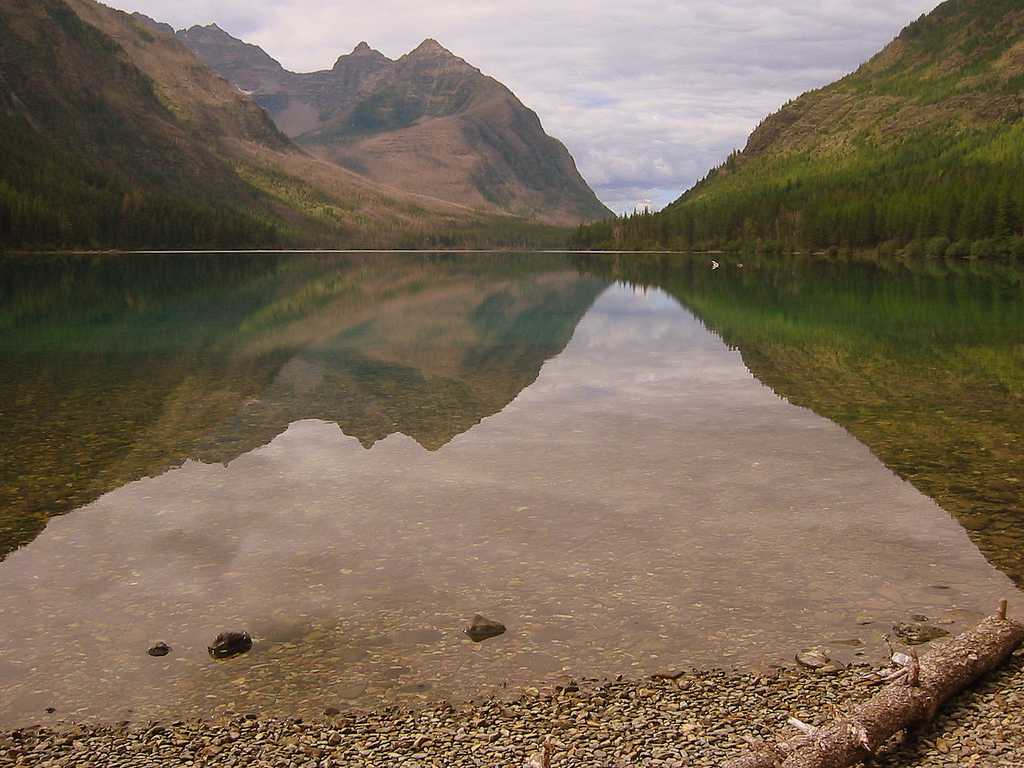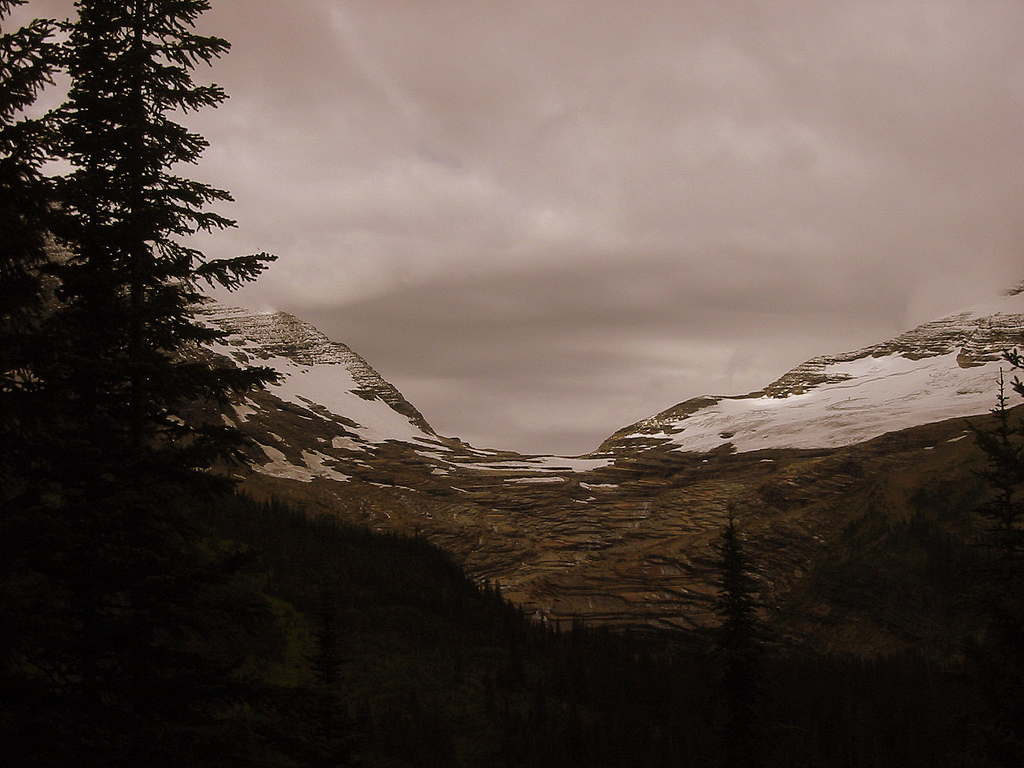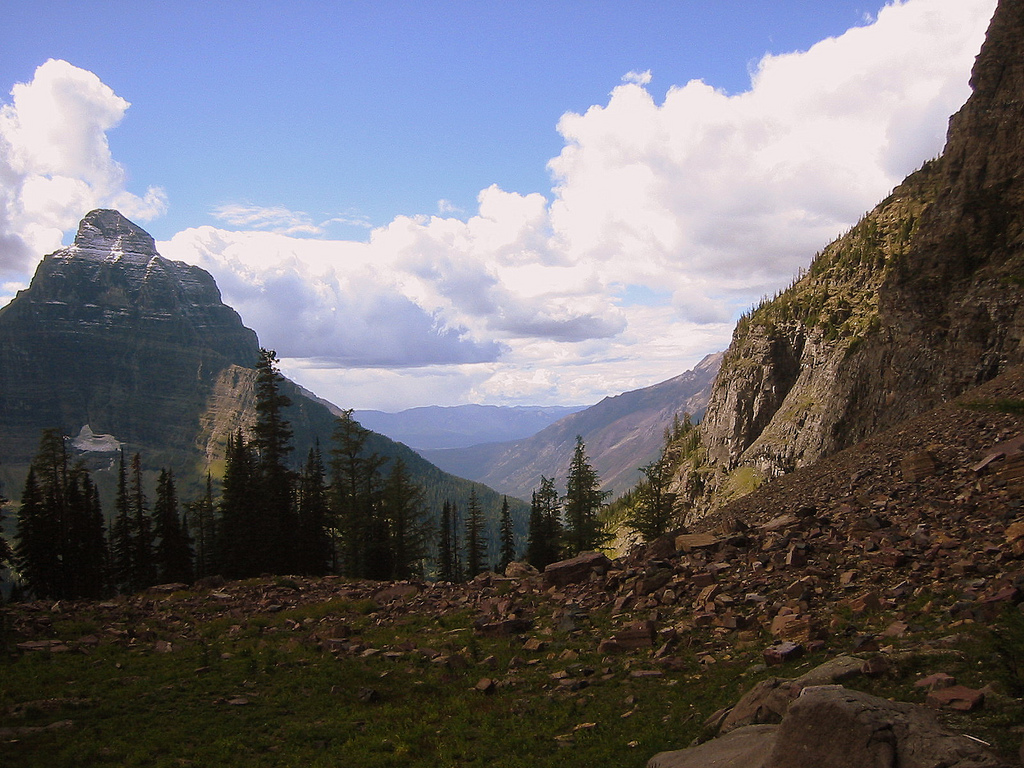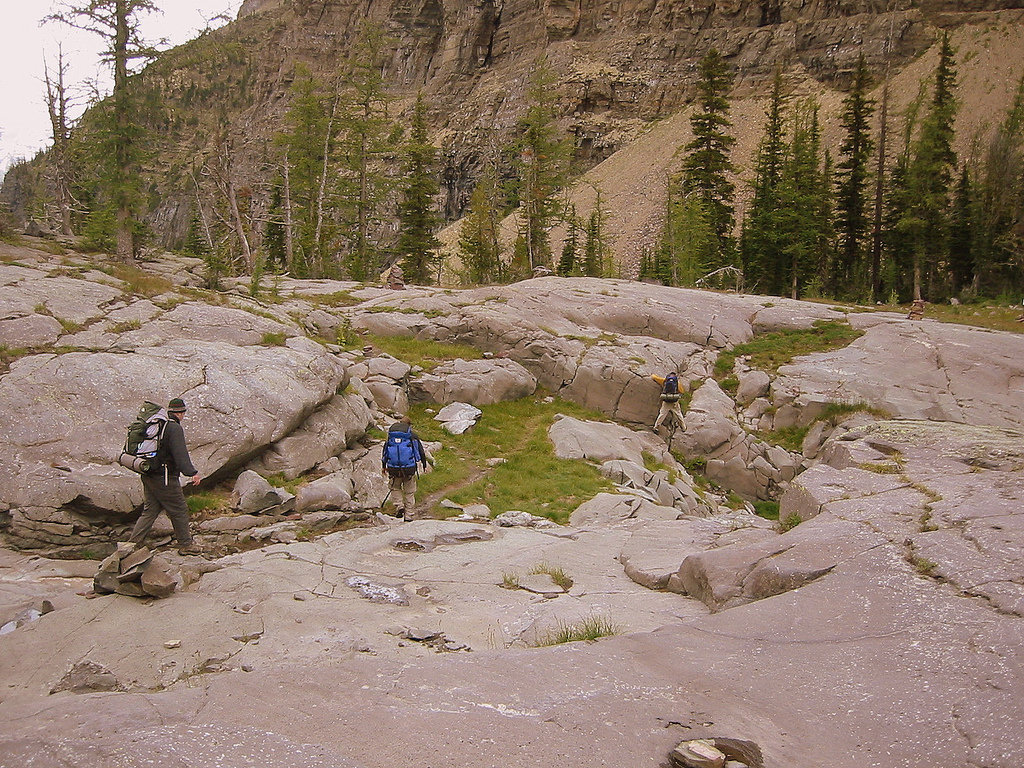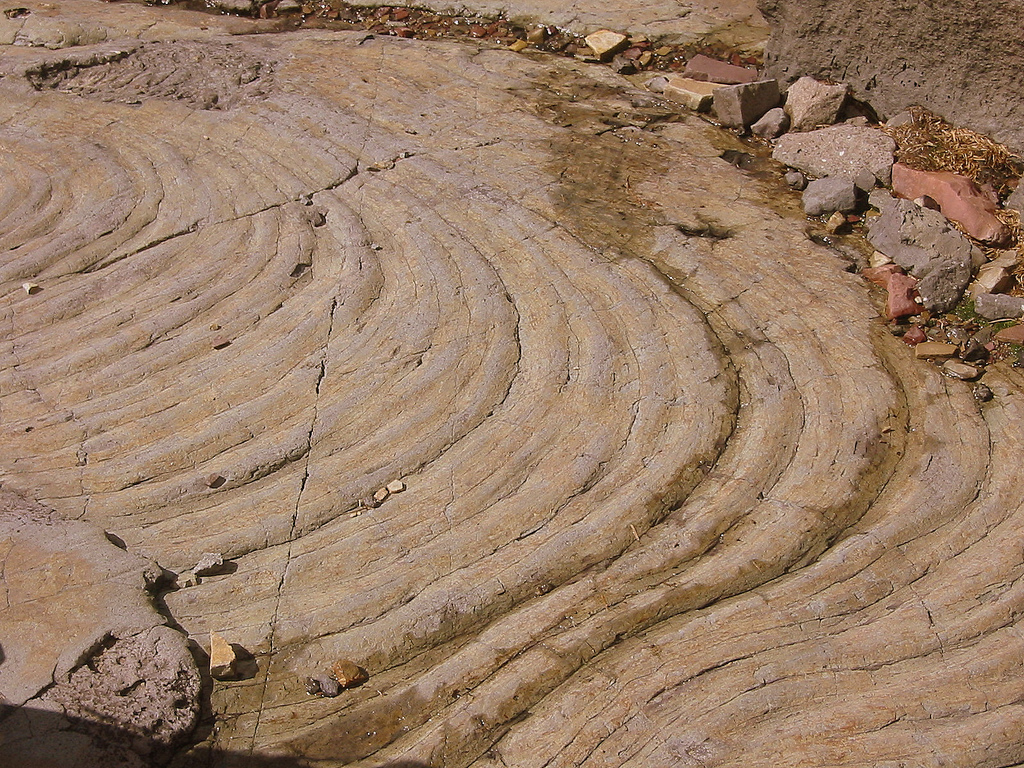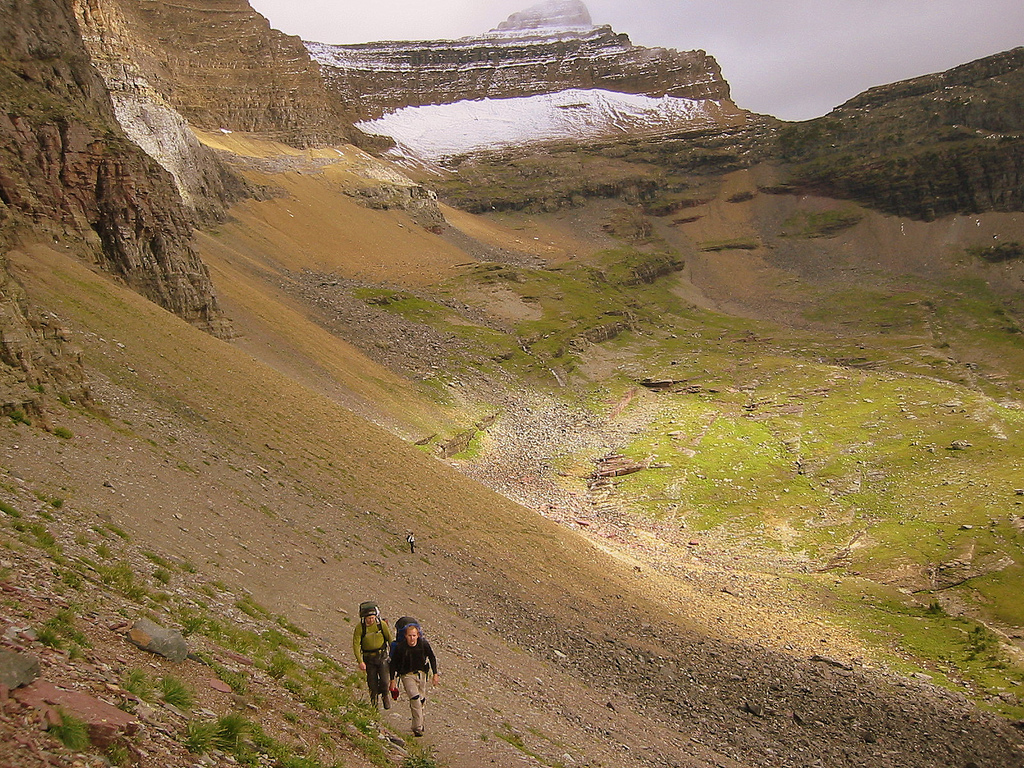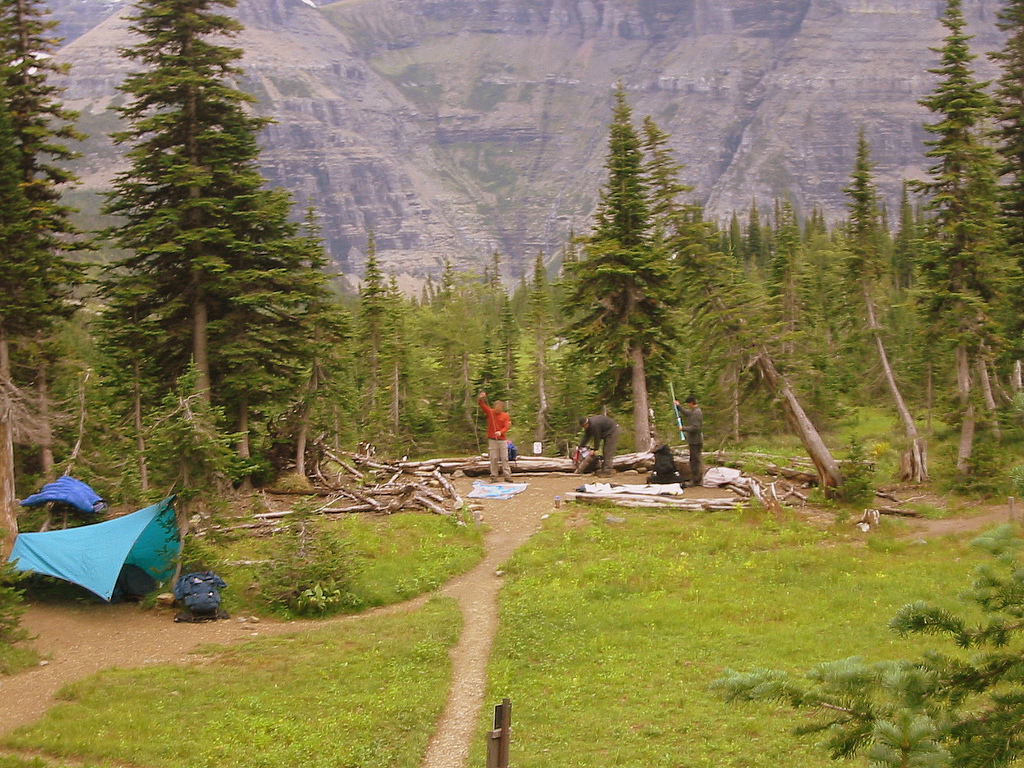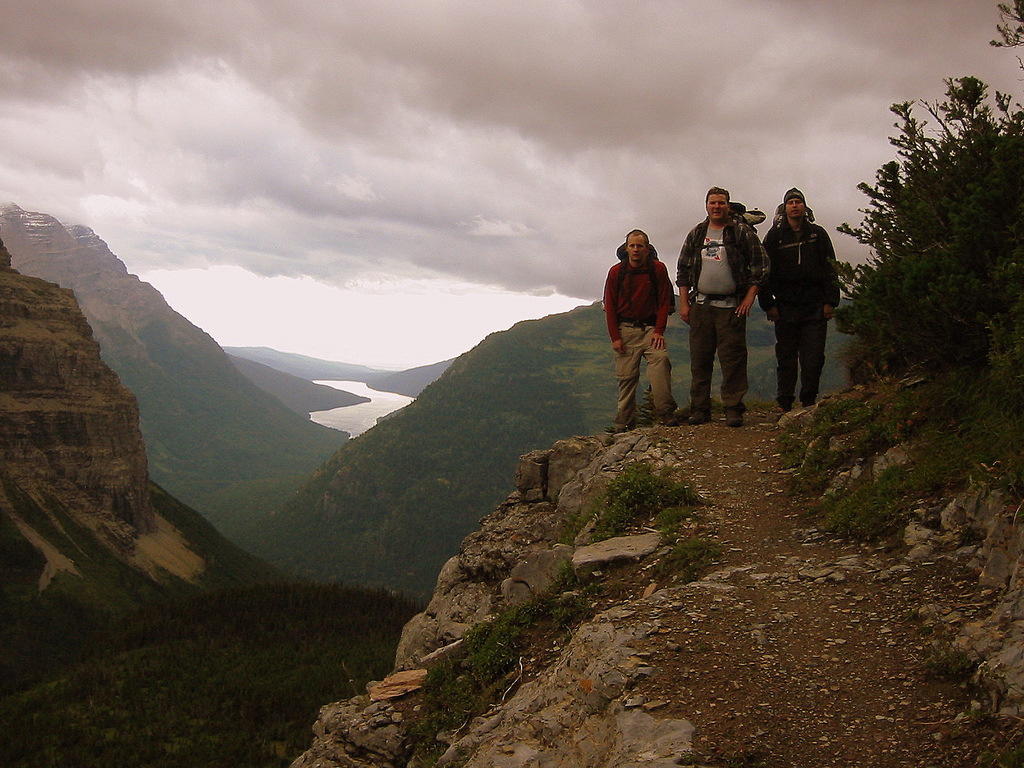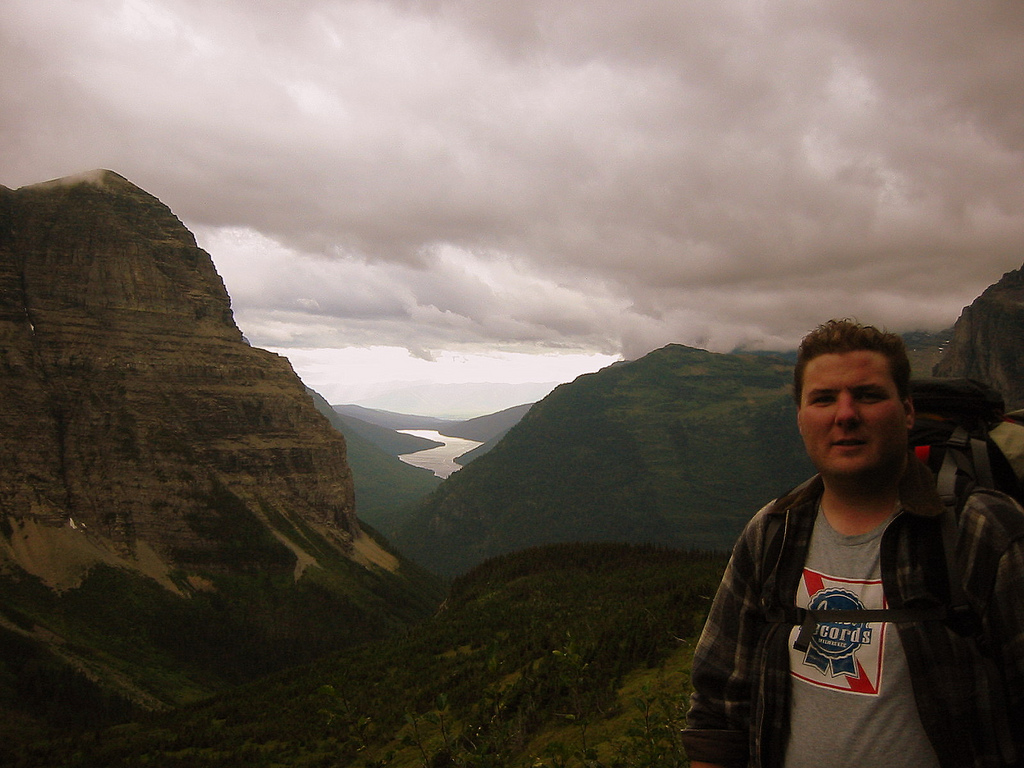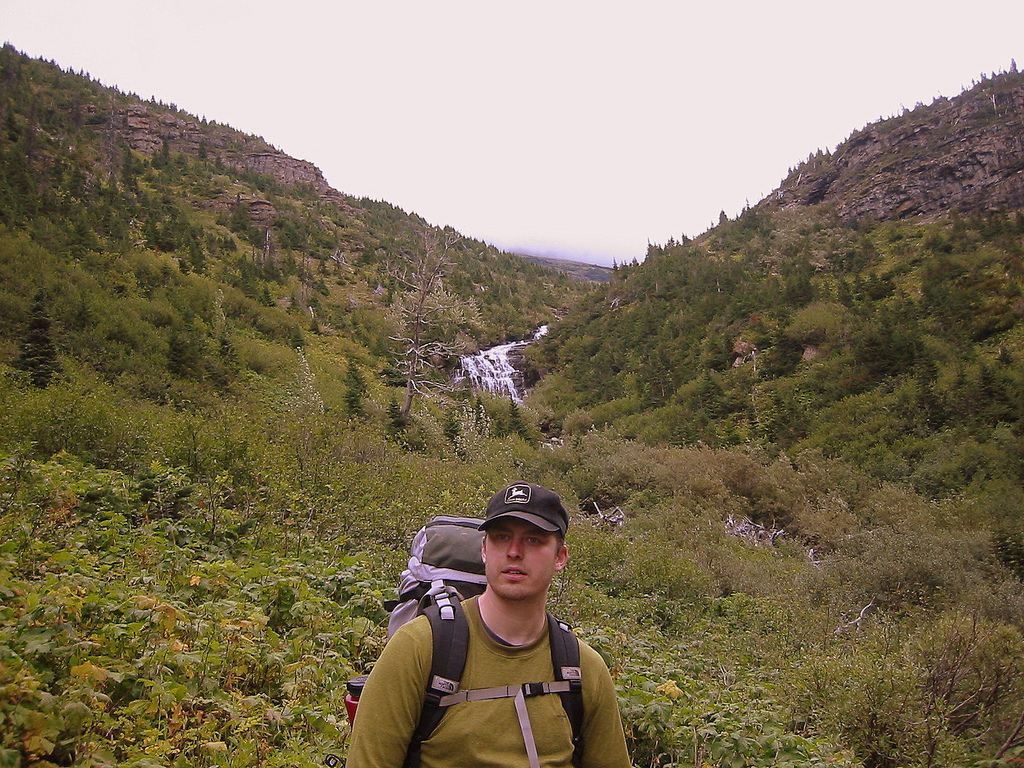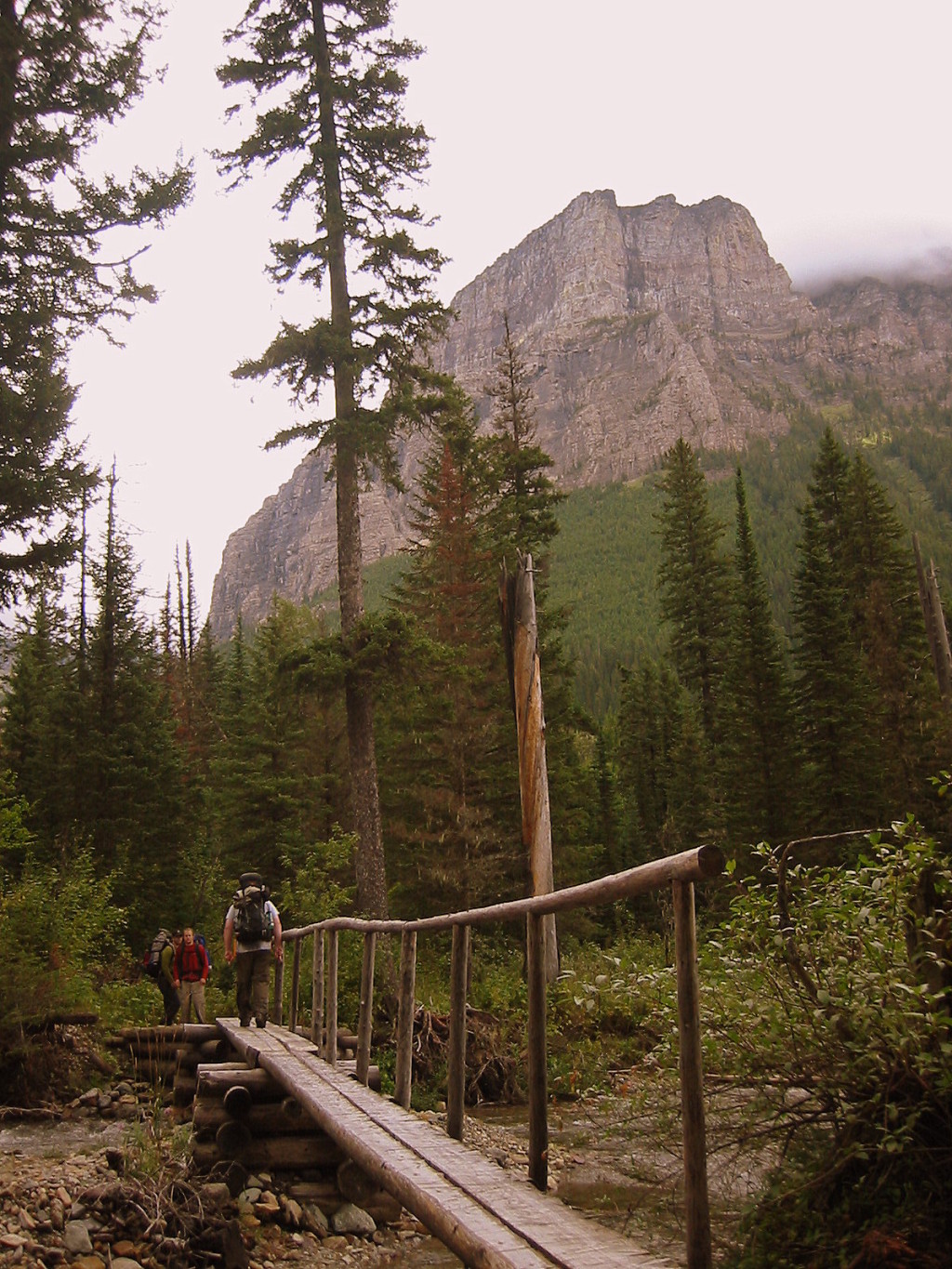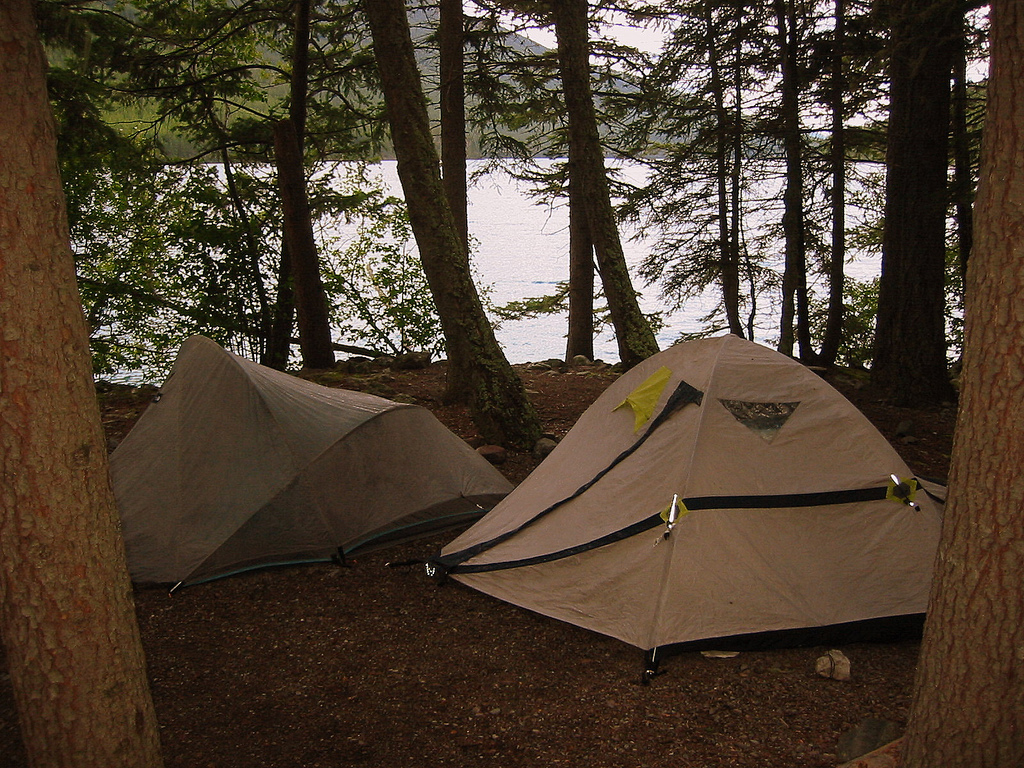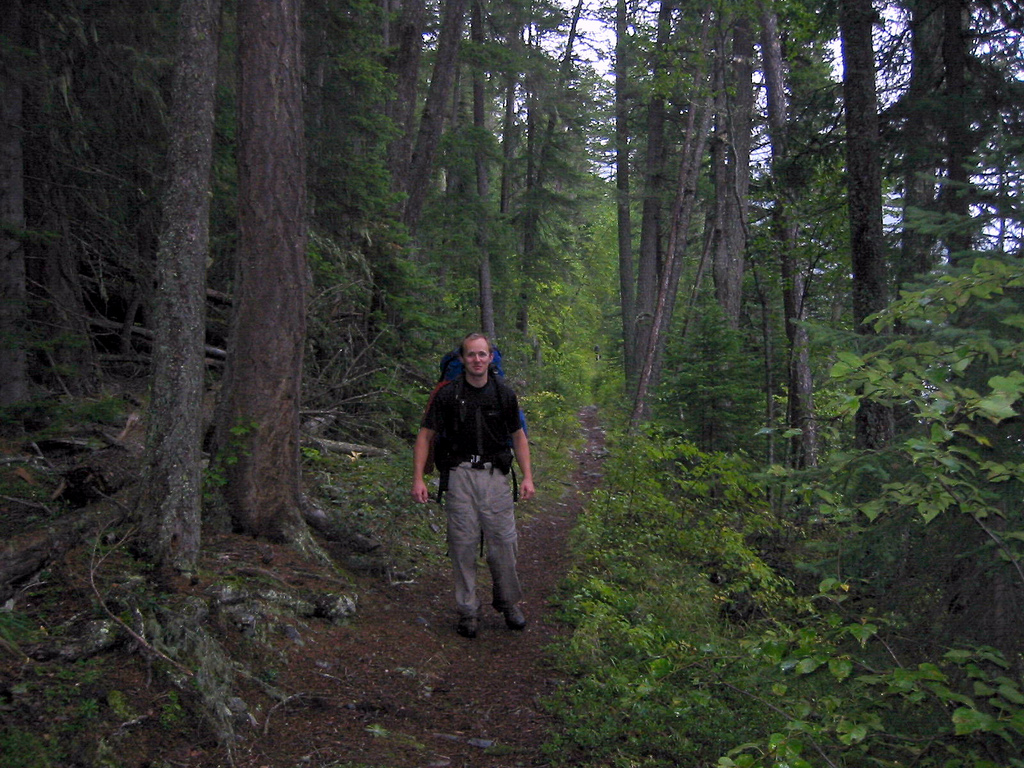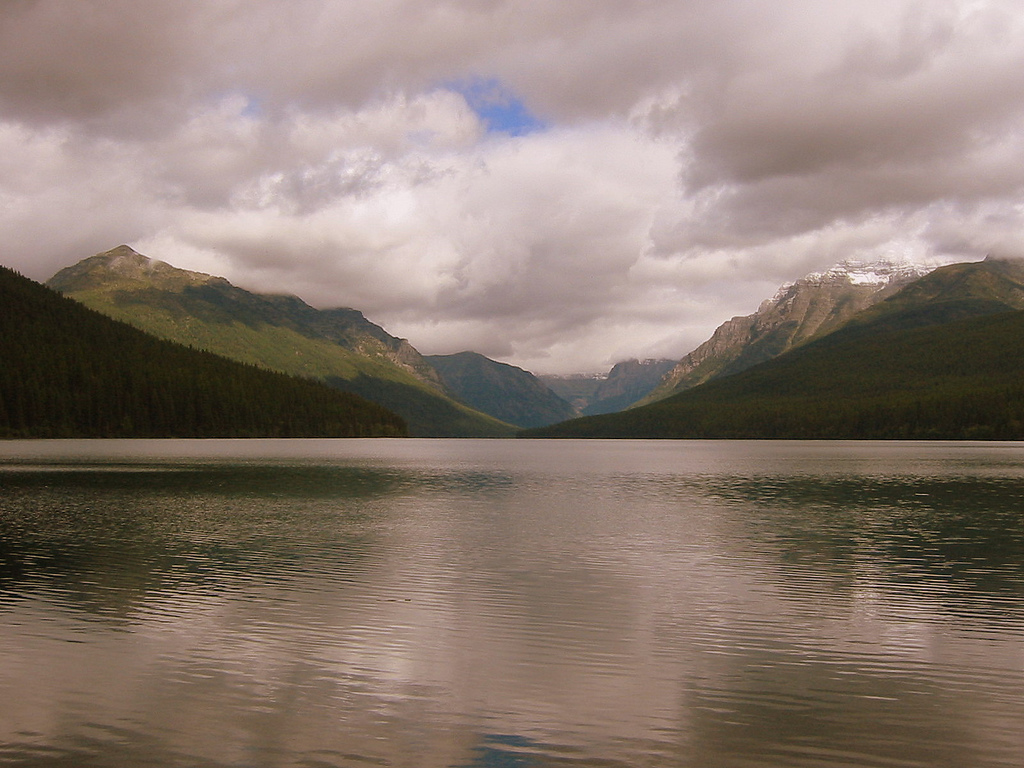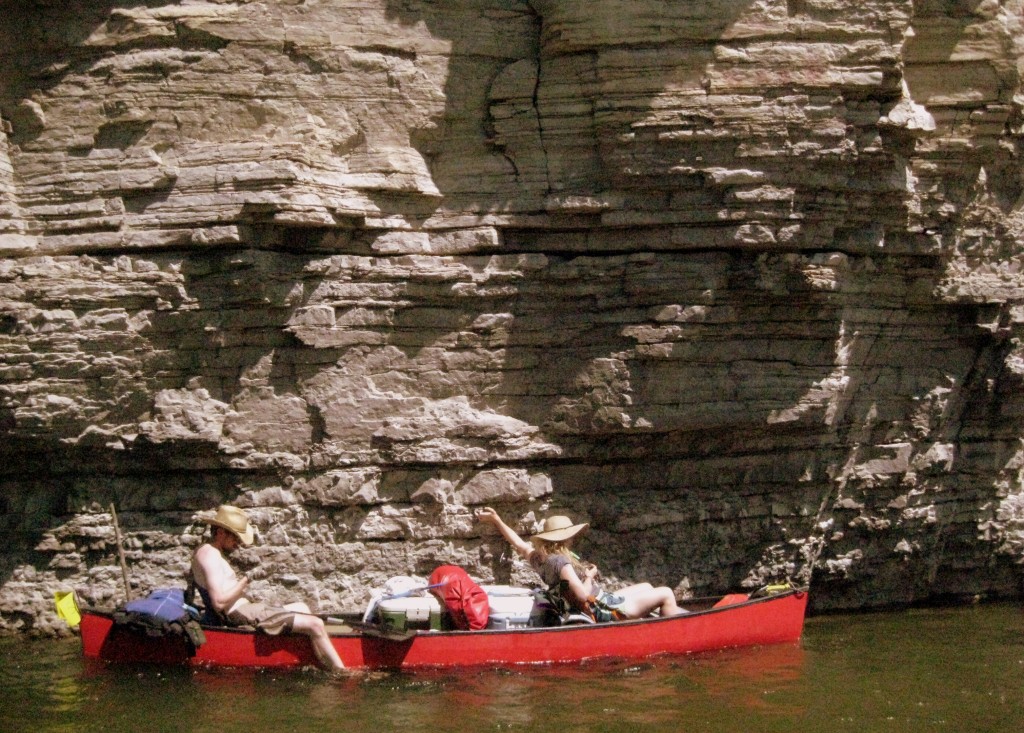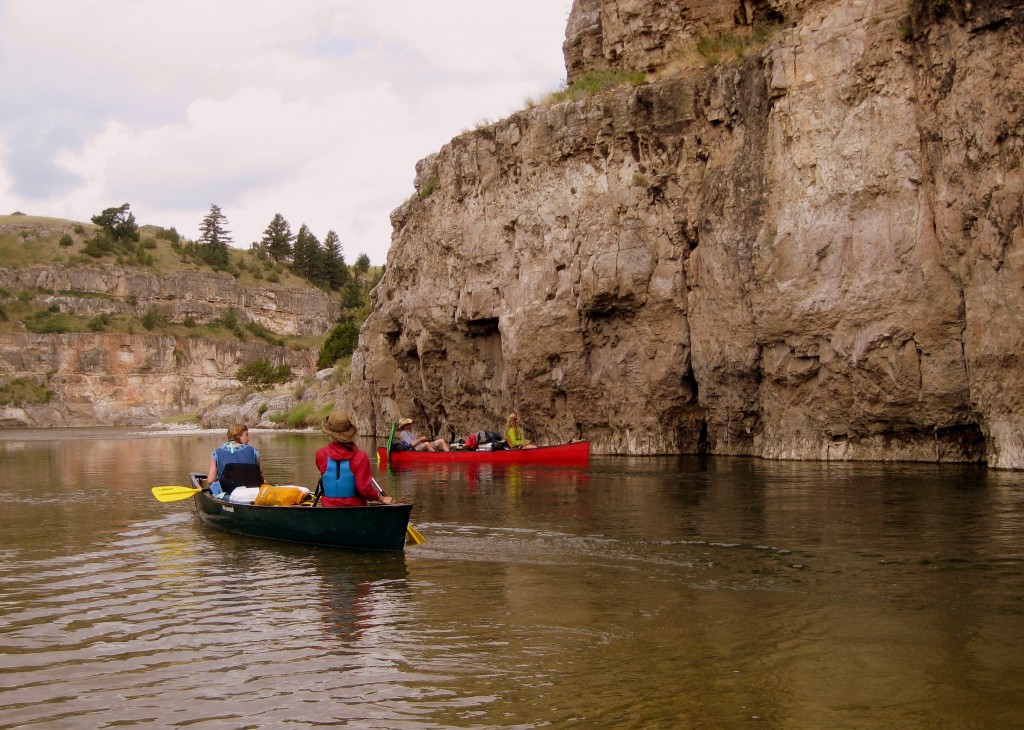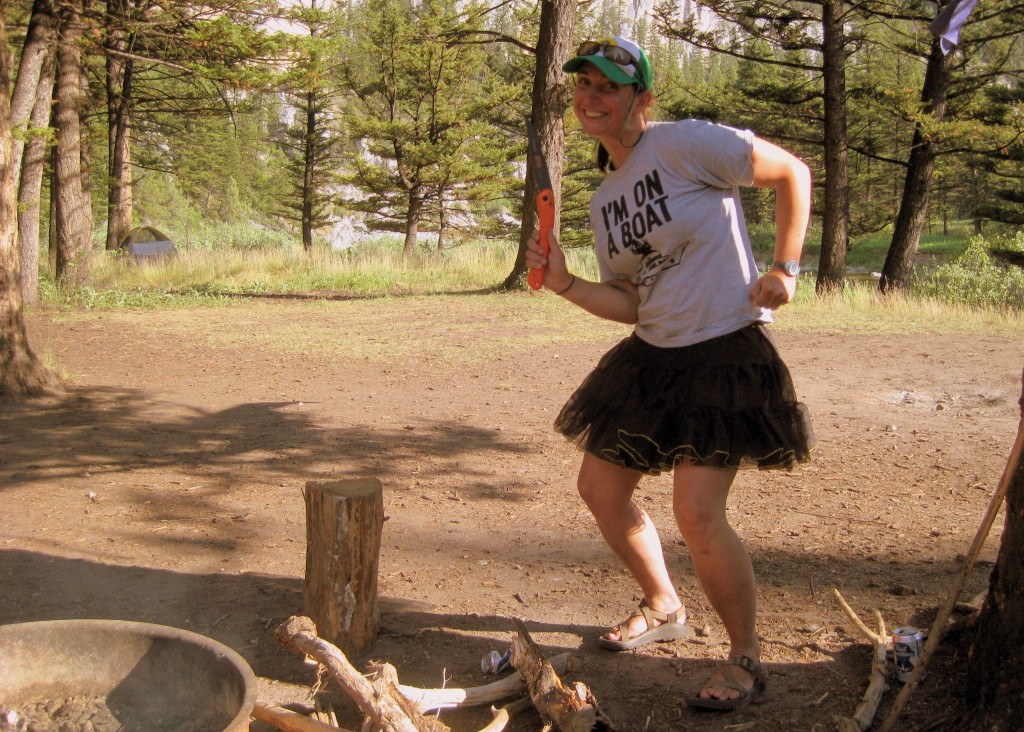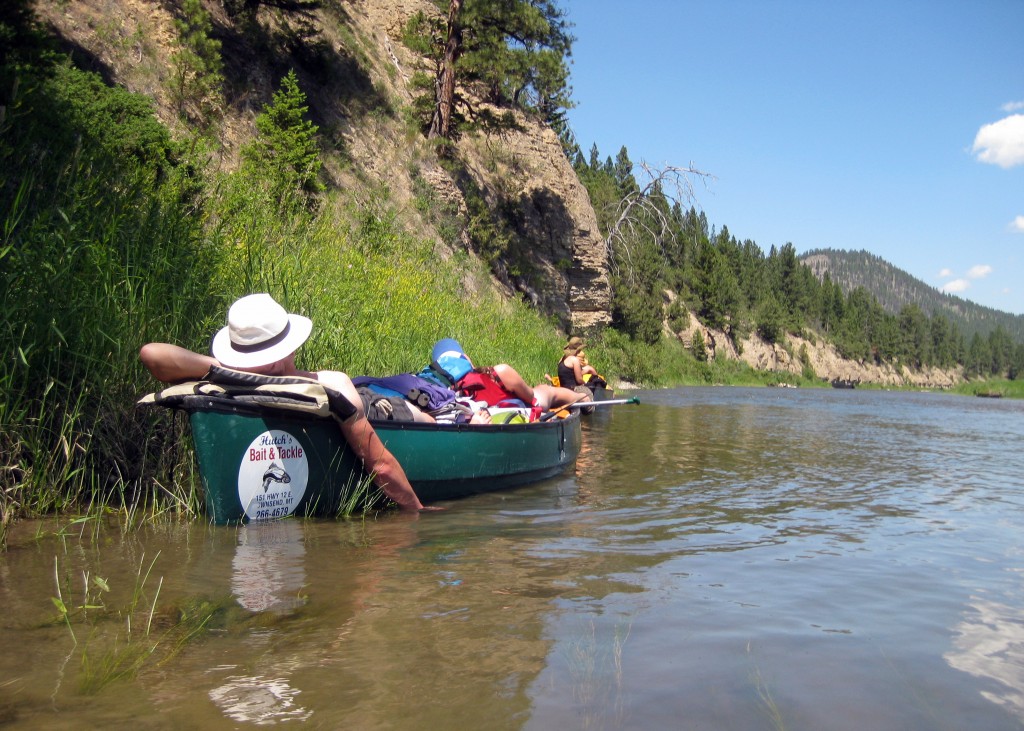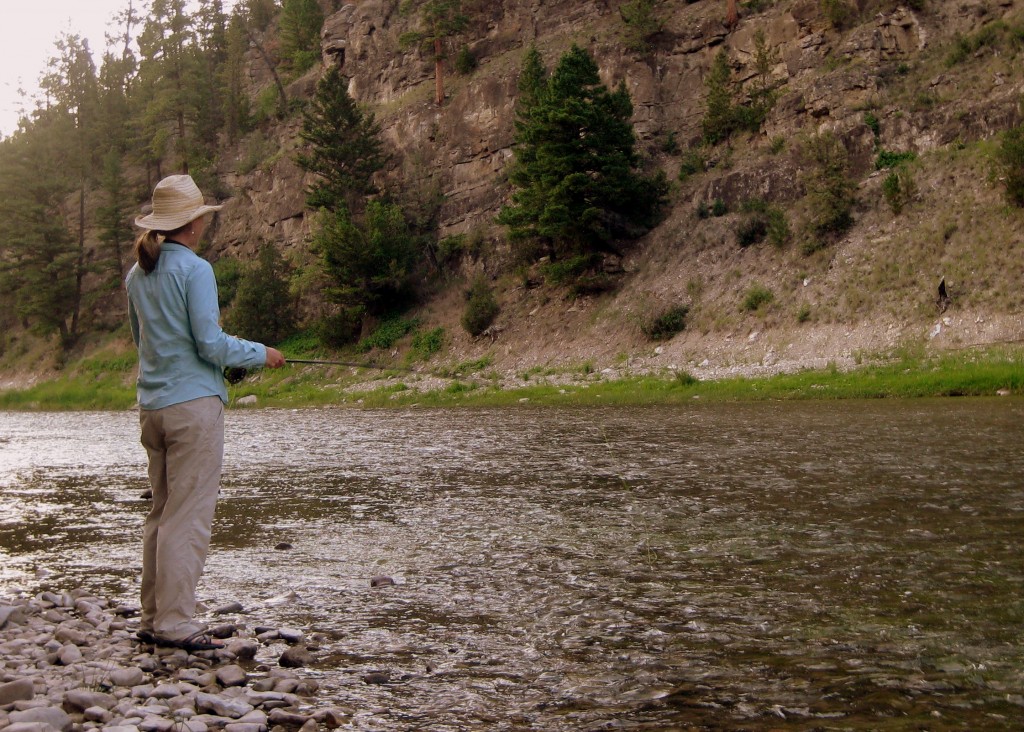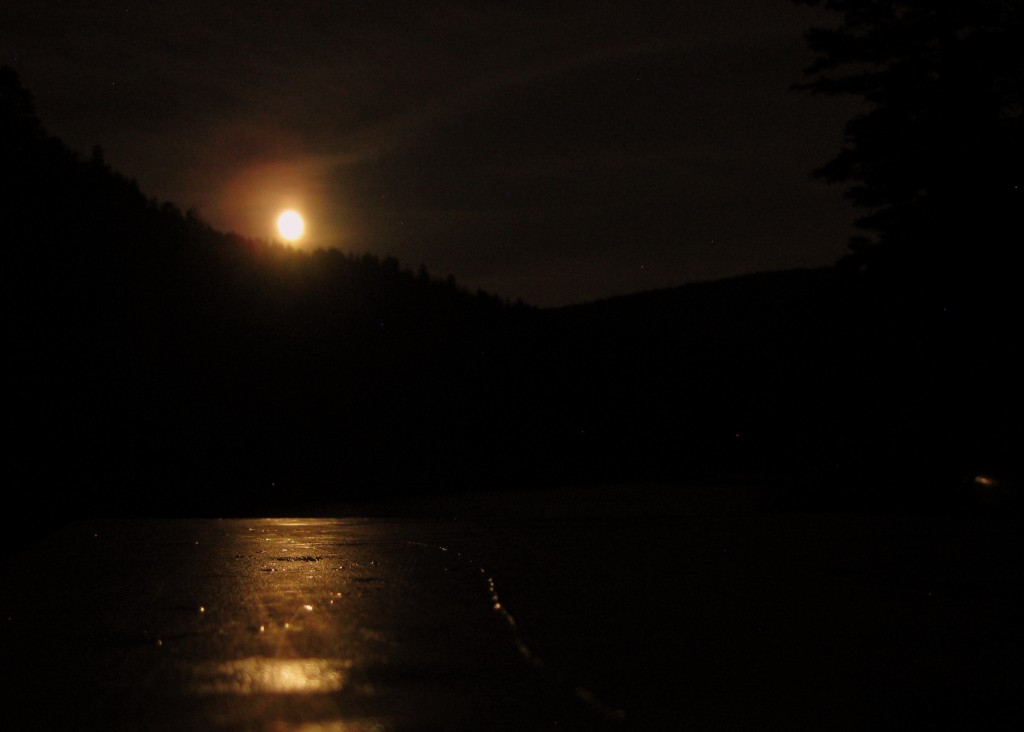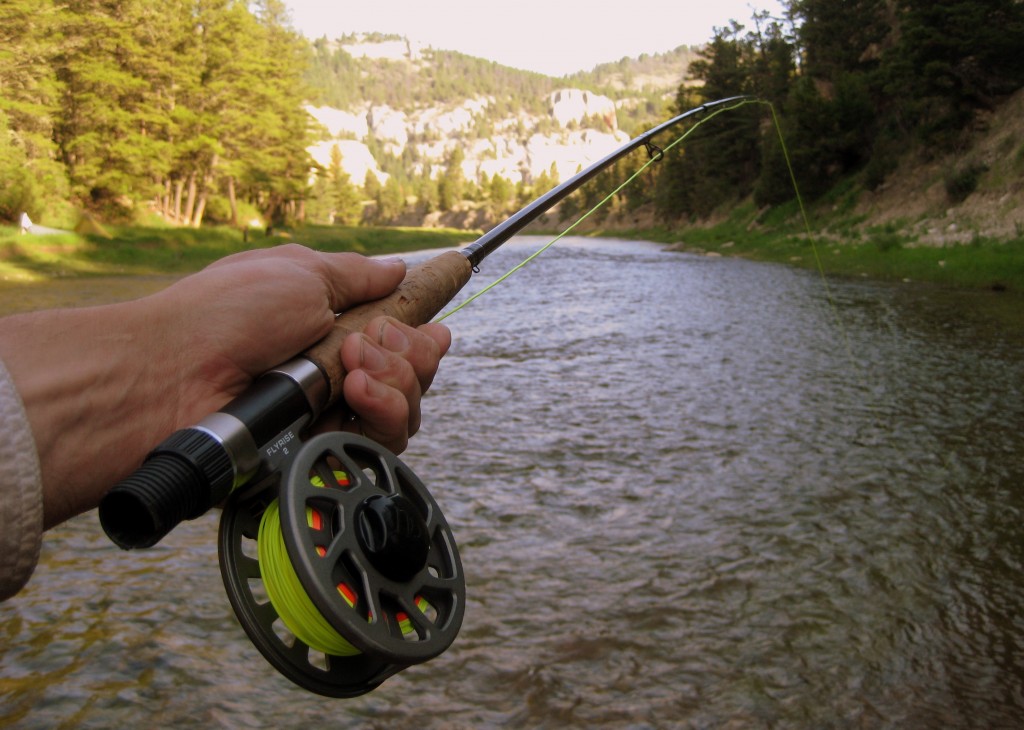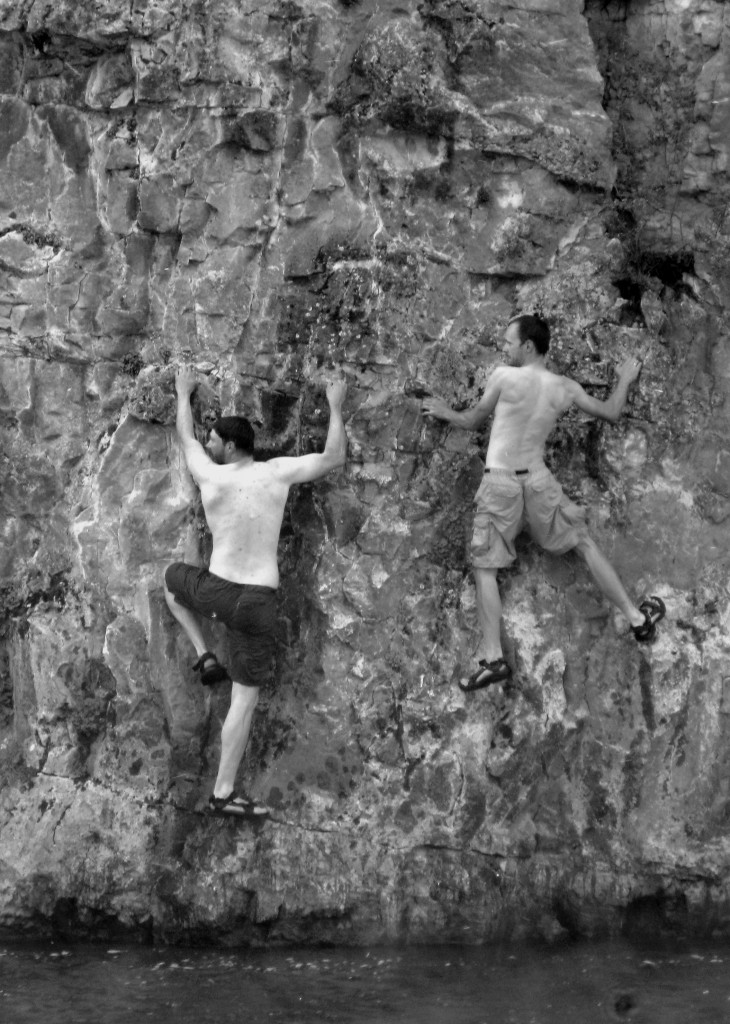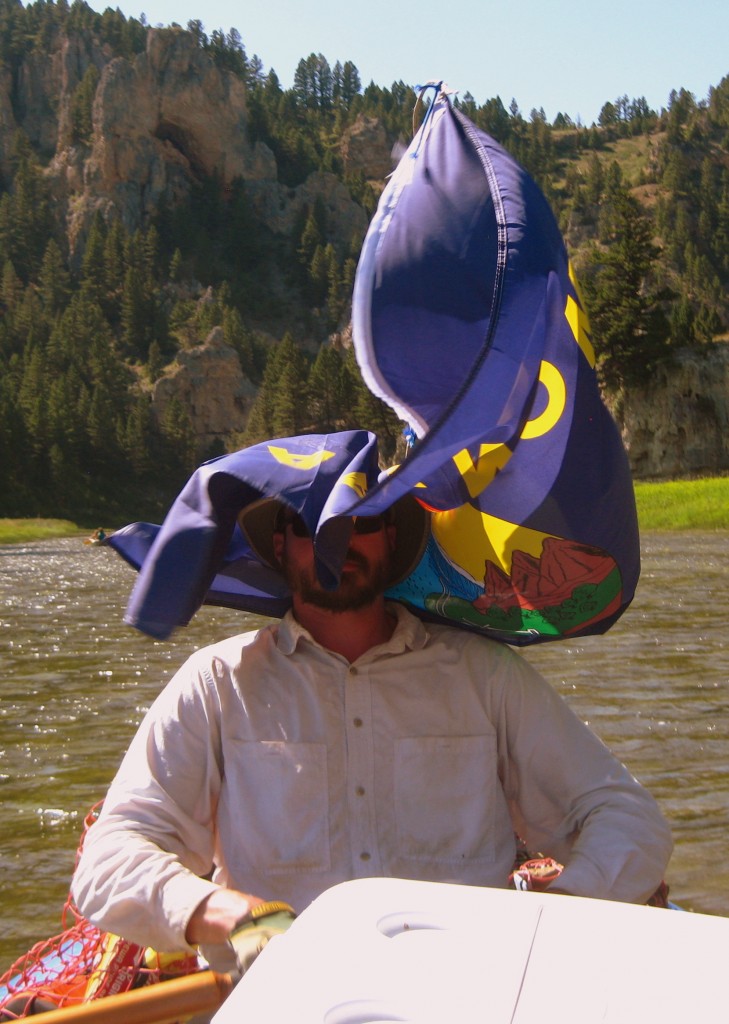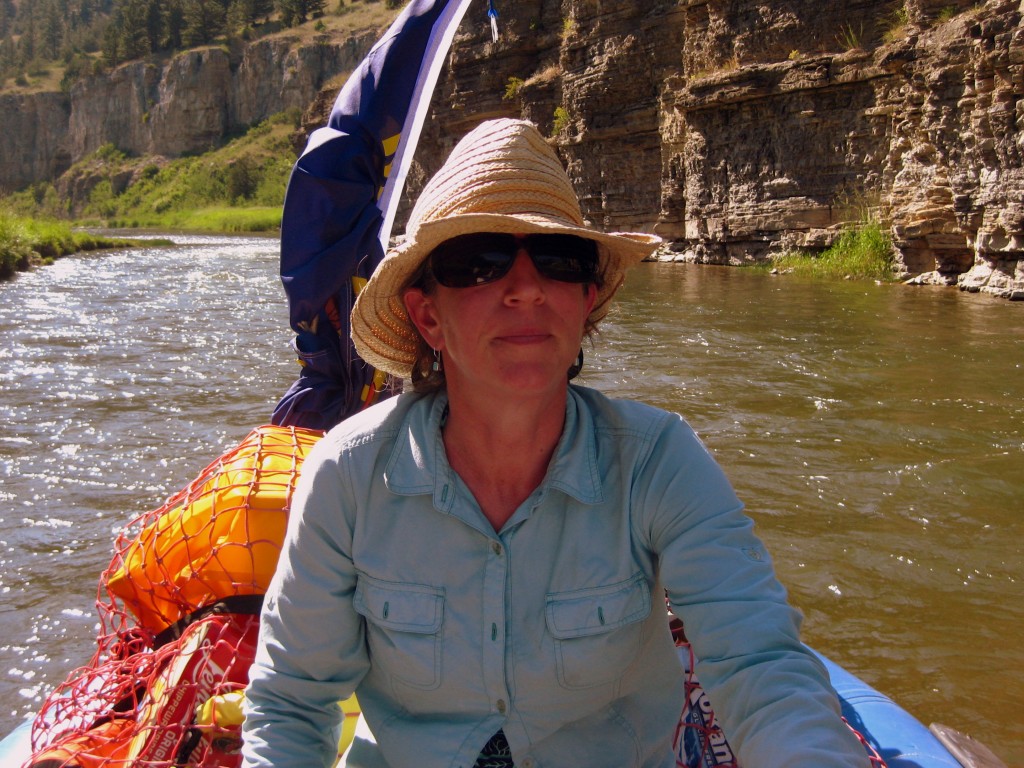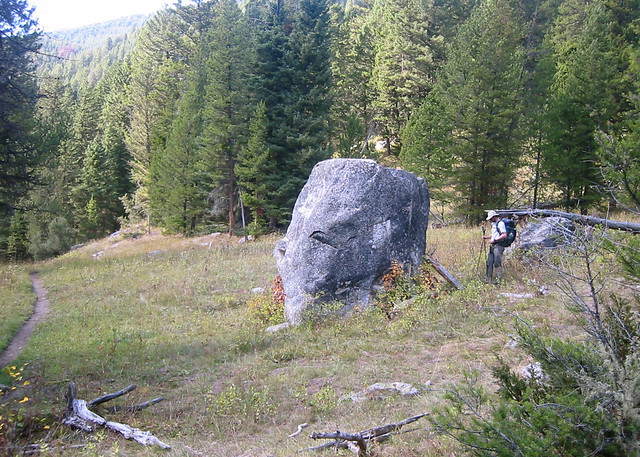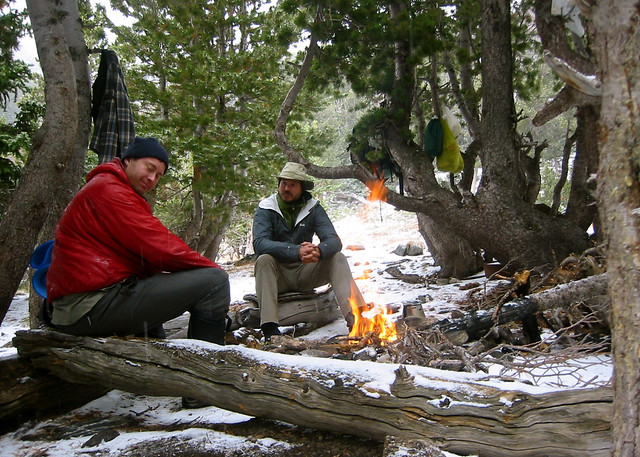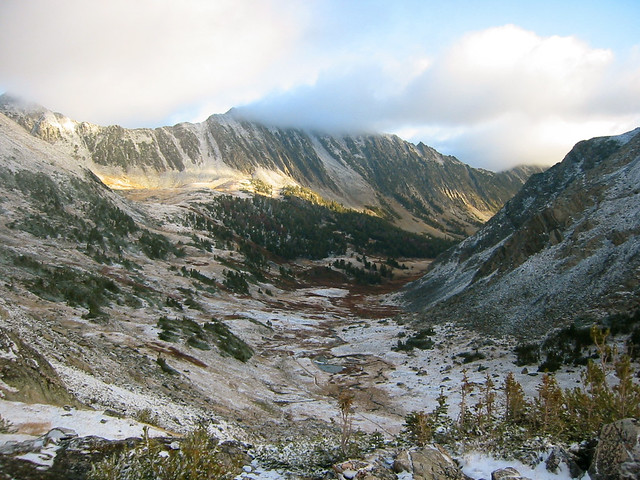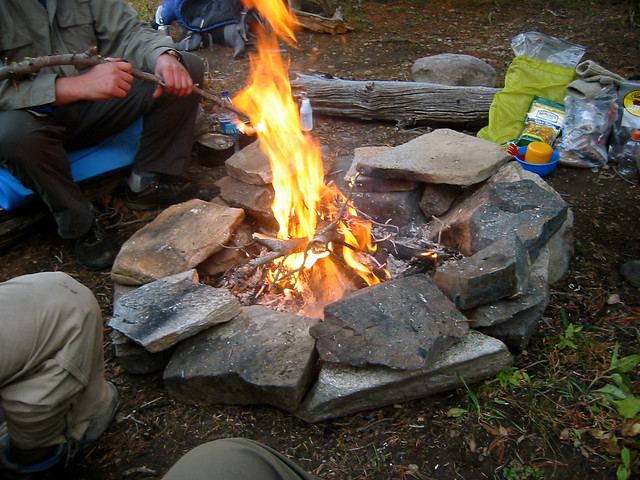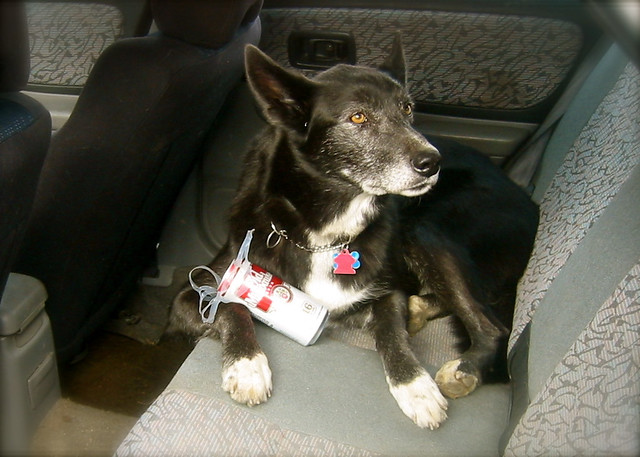Montana rifle hunters willing to put in the extra work it takes to get deep into the backcountry have early gates to begin hunting over a month prior to the general season opener so my buddy Justin and I set about planning a trip into one of these four districts. Â Three of the four are located up in the Bob Marshall and the other is located down in our neck of the woods in the Absaroka Beartooth. Â We picked an access point that we felt would offer up a good chance at finding big game, was close enough to a trailhead that hiking out a heap of meat wouldn’t wreck us (too much), but was still far enough from a trailhead or road to make the riff raff want to avoid it.
After some highway driving and a long, bumpy FS road we arrived at the trailhead to find fourteen other vehicles – more than ten of which were big ol’ diesel ranch rigs complete with full sized horse trailers.  We knew we’d be sharing the mountains with horse packers and hunting guides but we hoped they were going to stick to the main trail and that we were going to have the less visited drainage adjacent to ourselves. It was close to seven miles from the car just to get to the boundary of the hunting district and the point where we’d see if the horse packers continued downhill or if they turned off along the ridgeline to the next bowl.  Much to our delight the scratch in the grass that was the only sign of our trail was a great sign that the next drainage would be potentially void of other people.

With a smile on our face knowing we’d probably be leaving the more popular zone we carefully picked our way along the 10k+ ridgeline to the next drainage being careful as we approached not to skyline any critters that might be lingering as one drainage rolled over the small pass into the next.  The wind was howling and a light snow had started to fall as we low crawled up to the crest and began glassing the beautiful country below.  The cold was quickly getting the best of us as we were both still wearing just lightweight baselayers from the long uphill hike.  We carefully albeit hurriedly made our way over the saddle to a small row of stumpy conifers to get out of the wind.  Justin set about brewing up some coffee and I quickly donned a jacket and began glassing.  We had only been within the boundaries of the huntable district for less than an hour at this point and mere minutes later we both looked to the North and saw a young bull elk and three cows standing in full view not more than 500 yards away just checking us out.  They watched us for but a few seconds and took off at a trot down valley.  Busted.  What a great way to start a four day hunting trip!
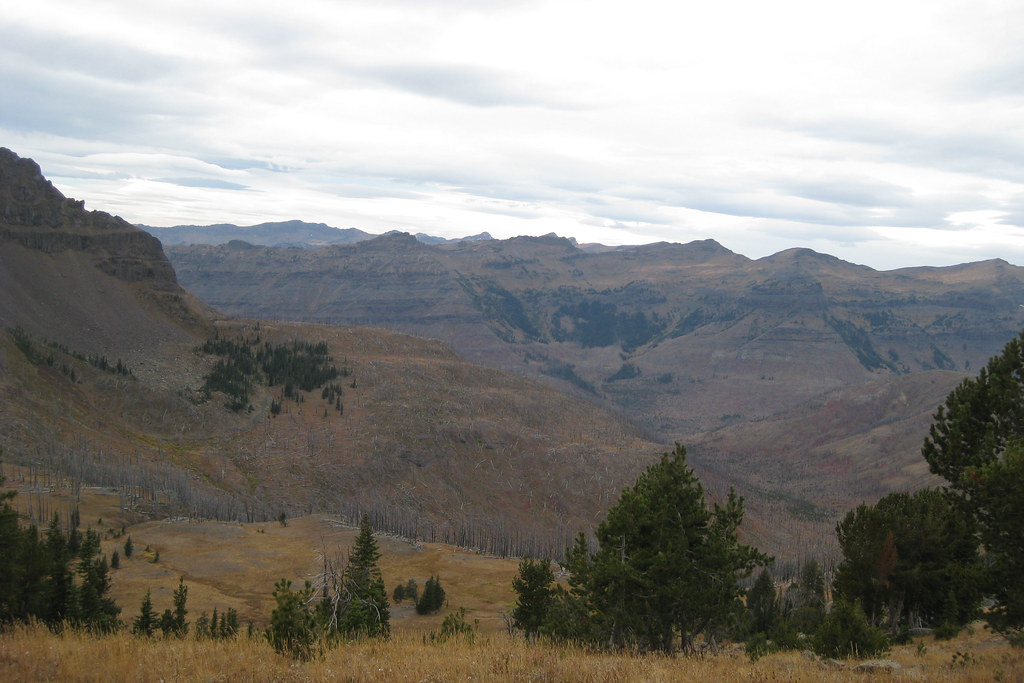
We kicked ourselves for not being supremely patient in glassing better prior to entering the drainage but the cold had caught up to us and we had never once thought we’d get into elk immediately upon arriving. Â Lessons – hard lessons – learned. Â I watched the elk effortlessly cover a couple miles of terrain and a thousand or more feet of elevation drop and gain in around 15 minutes. Â What immense, powerful animals. Â We made note of where they traveled and where they disappeared – back pocket information for our remaining time in this zone.
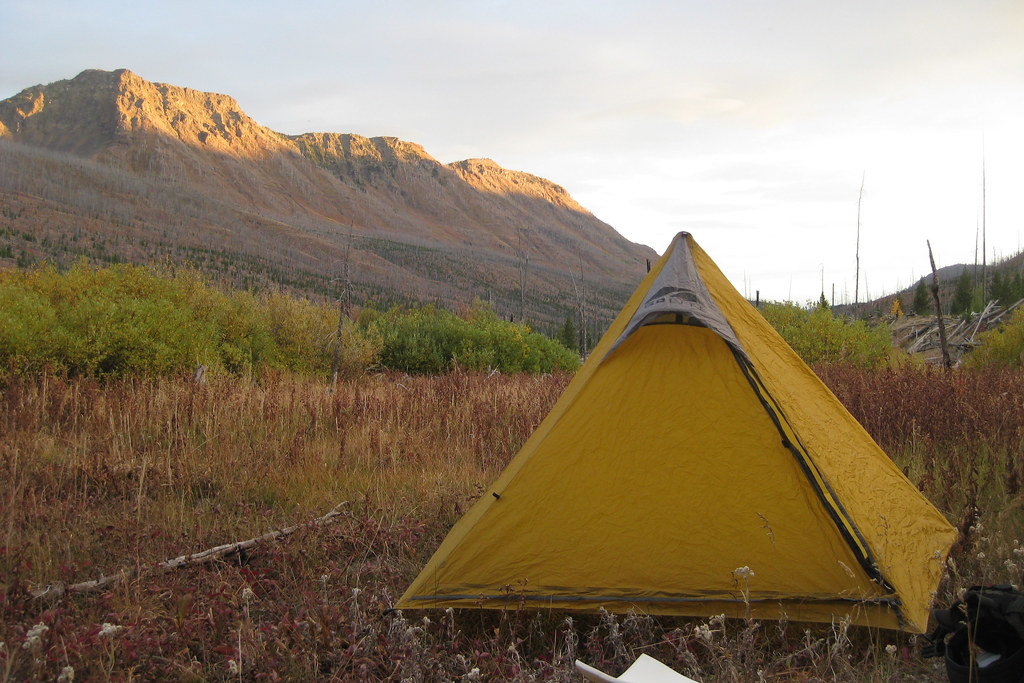
We made a plan to begin hunting down the valley slowly and cautiously. Â We covered quite a bit of miles walking a few hundred meters apart from each other down the essentially trail-less valley (a fire had torched nearly all the timber and the lack of use of the trail made it only a scratch). Â We had hoped that if one of us scared something up it would allow the other to get in a shot. Â As the magic light of the evening cast alpenglow on the high peaks above us and dark became imminent we picked a spot, set up the tent, hung the bear rope, and got our grub on.
Hunting is a sport of mornings and evenings so an early rise is essential. Â We woke at 0600, coffee’ed, ate, broke camp, and headed up the opposite wall of the drainage than we’d come down the previous day. Â We had formulated a plan the night before and began the arduous climb up the burned hillside chock full of fallen timber. Â Careful, micro route finding is essential in these situations to save yourself from a twisted ankle and fatigue but also to avoid making a racket that would undoubtedly spook up your prey.
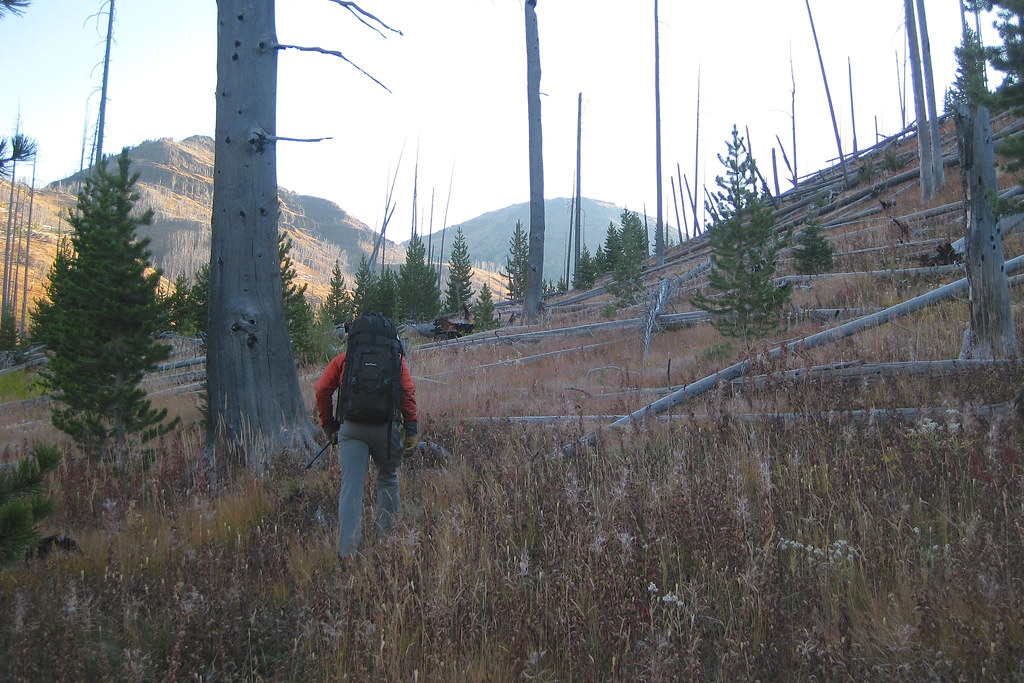
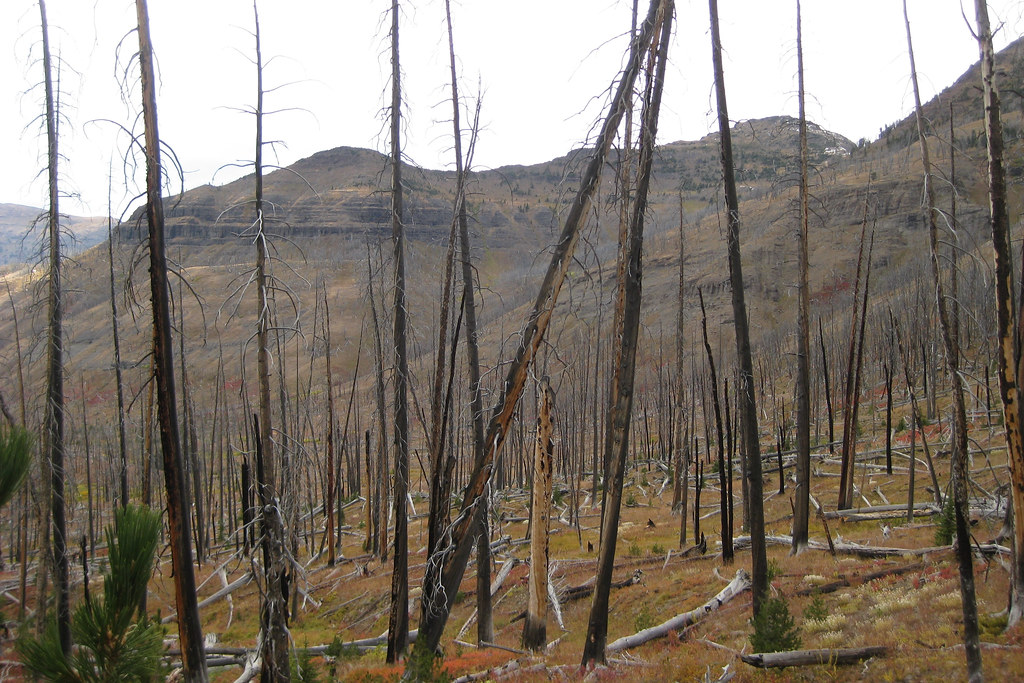
After six hours of careful maneuvering interspersed with a few hour-long sessions of just sitting and glassing we came to an open meadow nestled between two heights of land and backed by the steep, North-facing canyon wall. Â A small seep of water came up from the ground in the middle of the meadow, and distinct game trails and many animal tracks clearly denoted the presence of game in the area. Â This area was exactly where the elk that we spooked the previous day had headed down into after I’d lost site of them as I watched from the high country.
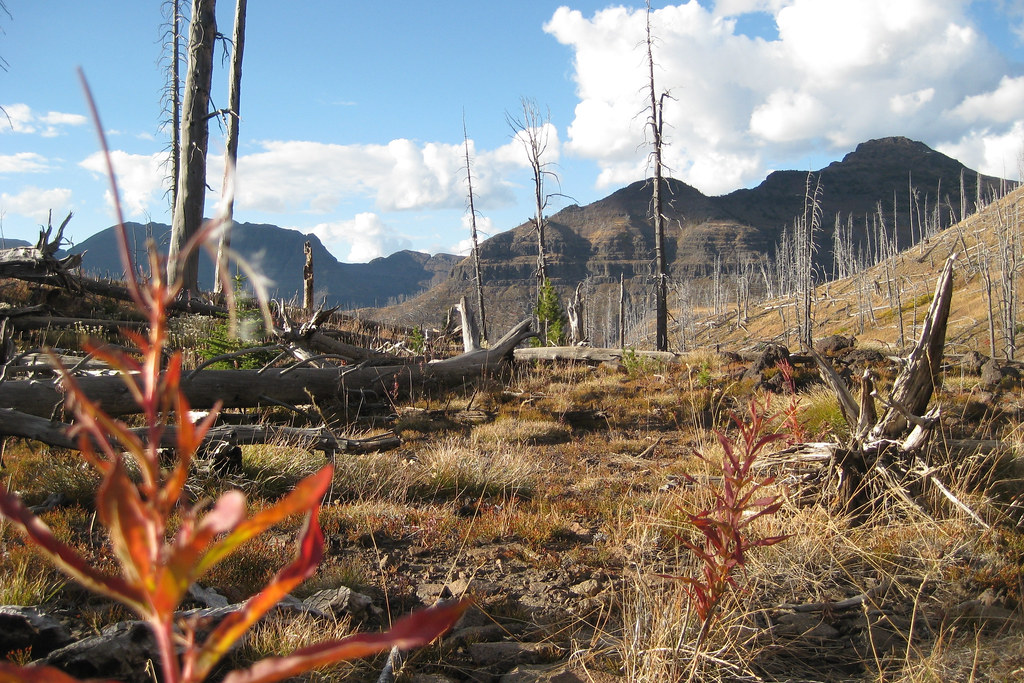
The plan we had made while glassing lower down the hillside was to find a spot we thought might be a “honey hole” e.g. the potential hangout spot for game and to simply post up in comfortable positions with stellar firing angles for the remainder of the day and then set camp just before dark. Â We each took up a position atop one of these heights of land, Justin covering one of the game trails and I covering one of the meadows, an side access game trail, and a steep downhill approach that showed lots of sign of elk and deer travel. Â The next six hours were very zen-like as we could not see each other, nor talk to each other. Â It was just each of us with our binocular, rifle, and our thoughts. Â We both glassed the area adjacent to us as well as the cliffs and hillsides many, many miles distant. Â Although no animals came into range we were both treated to our own delightful views of mountain goats on far away cliffs. Â The two that I spotted I was able to watch on and off for over two hours as they made their way along a high cliff a few miles distant from me.

We set our camp, had our dinner and were asleep before 2100. Â The previous night had dipped to 25 degrees F but tonight seemed to be off to a better start. Â Justin was traveling alpine-style with only the backpanel of his pack for a sleeping mat and was looking forward to a slightly better night’s sleep. Â I had the extra weight of a torso-sized inflatable mat on my back the entire weekend but it made up for any cold sleeping – – my least favorite thing to experience while backpacking.
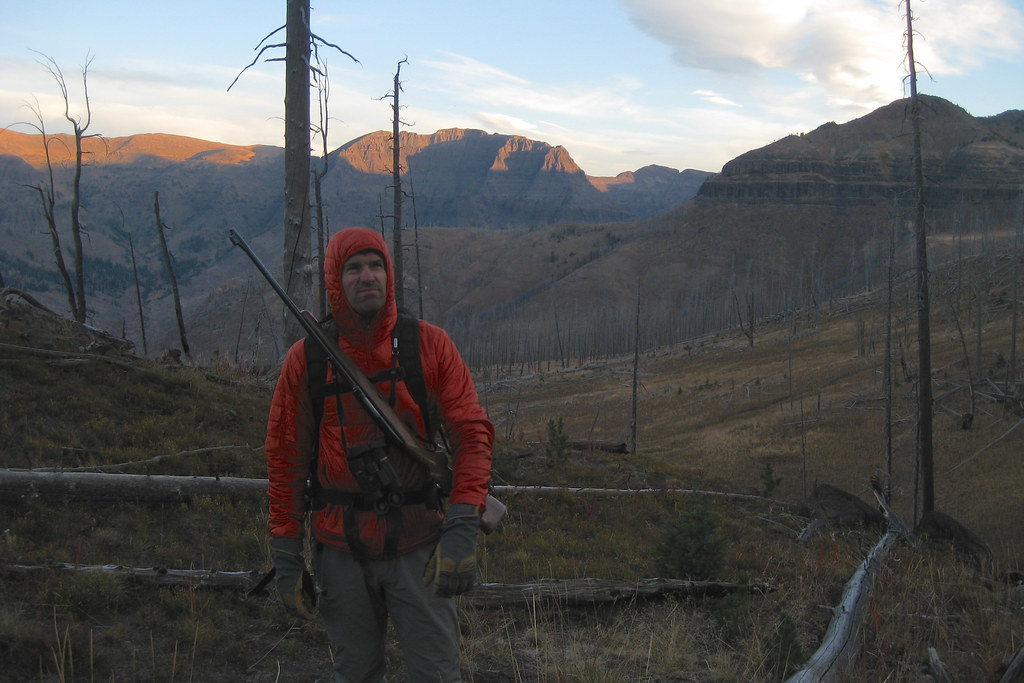
Another six a.m. wake-up, coffee, and breakfast found us climbing to the top of a steep bench where we were treated to astounding views of essentially the entire basin we’d now been hunting for 36+ hours.  We posted up in two positions, me to glass the entire upper country of the basin and Justin to guard the area we’d just approached from in the event an animal came ambling up the hillside to the tasty browse on top of the bench.  I formulated a plan and ran it past Justin for how to spend the afternoon.  He concurred and suggested a few alternatives which jived well for both of us.  We would continue hunting the side of the canyon we were on until mid afternoon and then if nothing had transpired, head back over to the main canyon where the horse camps were to make a camp and then hunt for the morning prior to needing to head back out to civilization.
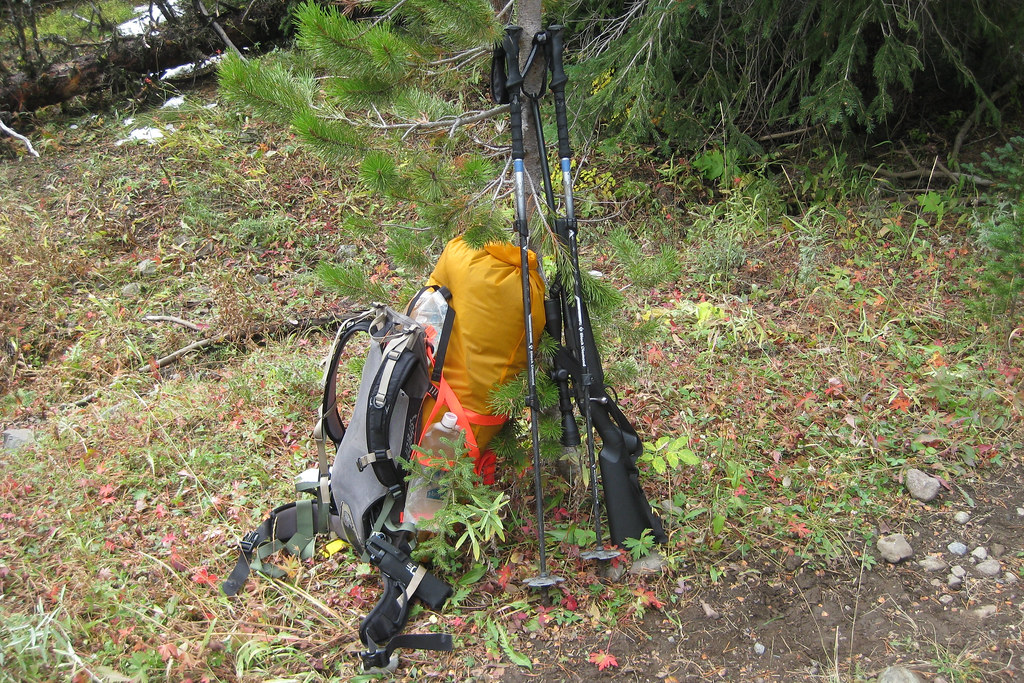
We very carefully picked our way down off the bench bumping from one patch of trees to another, glassing the next ahead as we went and always glassing the distance as far in any direction as we could see.  We spotted a very solid game trail in the distance which clearly marked the route from the high country down to the honey hole we’d camped at for any animals coming from the high country downvalley along this side of the canyon.  We jumped onto it and slowly made our way up canyon.  Midday was fast approaching and we’d not yet seen any critters so we moved with a bit more speed and stopped to glass less.  We did however maintain an attitude of stalking and did not give ourselves away any more than necessary.
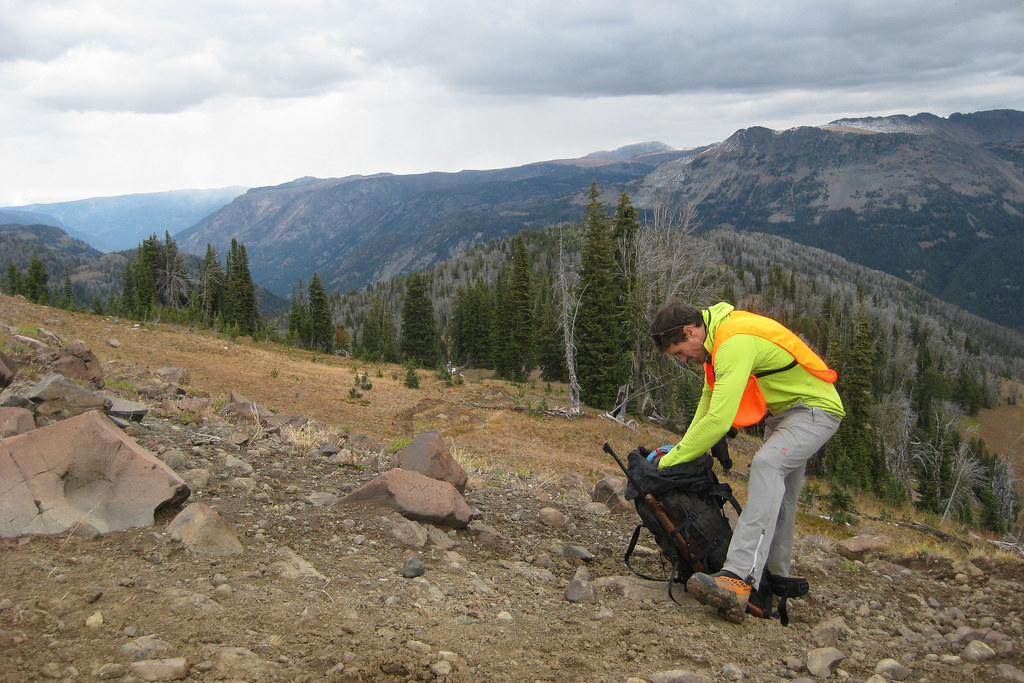
After a glorious stop for lunch along a fresh, clear stream of water below a steep cliff I spotted two white rumps in a meadow ahead. Â I put my hand up to motion to Justin behind me and carefully glassed around a conifer. Â Two mule deer does were a hundred or so yards ahead of us. Â These does were off limits in this district at this time so we didn’t bother with them and made our position known to them before continuing our creep uphill. Â Moments later I put my binocular up to my eyes to glass the distant hillsides as I’d done hundreds of times previous and in my slow sweep my eyes landed on what I instantly thought were six elk and I immediately told Justin so. Â I then lifted the binocular again and retracted my statement, clarifying that they were not elk, but muleys. Â The animals were over a half mile away so identifying their sex took some very patient viewing through both the binocular and rifle scope. Â After ten or so minutes I felt confident that at least three of them were male and we talked over the feasibility of a stalk from so far away on these animals known for being extremely attentive and jumpy.

I made one potential suggestion but it involved coming in from above the animals including a couple hundred yards of completely exposed terrain.  I had little to no confidence that this approach would work but I was very interested in making an attempt on these animals.  Taking a mule deer buck was an acceptable option for me as I planned for this trip.  Justin joined me on this trip with the intent to focus on hunting elk and wasn’t as interested in taking a mule deer. When I told him I would rather spend the remainder of the day making an attempt on one of these bucks than I would just moving over to the next canyon to find camp he wholeheartedly offered up a suggested approach to the stalk that I completely got behind.
We worked out a series of hand signals so that he could remain behind in a good position to glass the animals as I set off to cover the 1/2 mile and try to get within the range I feel comfortable shooting at, which is 200 yards.  My method was to use spotty vegetation and the topography of the land to keep myself as hidden from these incredibly attuned animals as I could.  This entire stalk was going to rely on the fact that it was approximately 1400 hours and it was highly likely that these animals were about to bed down in a thicket for an afternoon rest prior to their evening feeding session later.  If they did in fact bed, and I could spend the time while they were doing so getting into position I could then wait them out until they appeared from the scrub and into my sights.
I covered the 1/2 mile stealthily, dropped my pack in a thicket and began bear crawling with just the essentials. Â I had put on an extra layer and drank some water in case I was in for a long wait, but otherwise only had my rifle, gloves, and earplugs along with me. Â Continuing to try and keep either vegetation or small undulations of earth between me and the animals I was able to successfully get to the last remaining thicket of trees before an open space and the thicket that the animals had bedded down in before I set off to stalk. Â I was now operating blind because I had not been able to keep an eye on them as I walked. Â I carefully brought my binocular up to my eyes and almost as if on cue a buck stepped out, completely broadside to me and stared down canyon directly toward me. Â I was well hidden and I was pretty certain he couldn’t see me but there was a wicked wind blowing across me and up and slightly to my right that was undoubtedly wafting my odors across his nose. Â I had only just arrived at this spot and I had not yet had a chance to position my rife into a comfortable and stable shooting position so I was not yet ready to take a shot. Â Once again, almost as if on cue as I lay there on my stomach cursing his timing he stepped back behind the thicket.
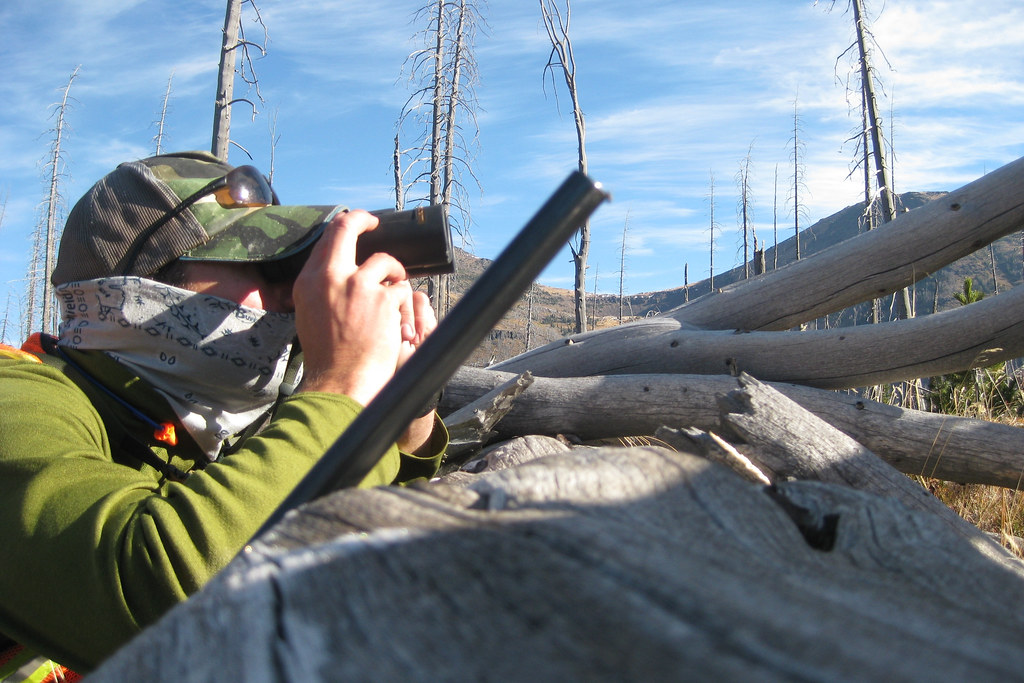
I took a deep breath and dug deep into my well of patience and told myself that good things can come to those who wait so I immediately set about positioning a small log in front of me and testing the steadiness of my rifle, adjusting my scope and going over the shooting regimen in my head as I waited.  I had arrived in position at 1500, only about one hour after first spotting the critters.  I could see three animals, all with between three and four points on one half their antlers milling about behind the thicket but not even remotely with enough clarity that I would consider taking a shot.  I simply had to wait and be patient.  I was blessed with this not taking too long however as only 15 or 30 minutes passed when the first animal’s head popped out from the trees.  And then just beyond him, another.  Neither had exposed their front shoulders – the aspect of the creatures needed to be visible to make a clean kill.  Then a third head appeared and I carefully examined each critter and decided on which I would take aim upon should they finally decide to walk out.  The first two came out into the complete open and began feeding and it was everything I could do to remain calm, breathing slowly, attempting to control my heart rate.  These minutes stretched on for what seemed like much longer until the buck I had my rifle leveled on stepped out.  He made one step, two steps, three steps, as I carefully tracked him in the crosshairs of my scope.  I took a slow, controlled, deep breath, exhaled, and triggered.
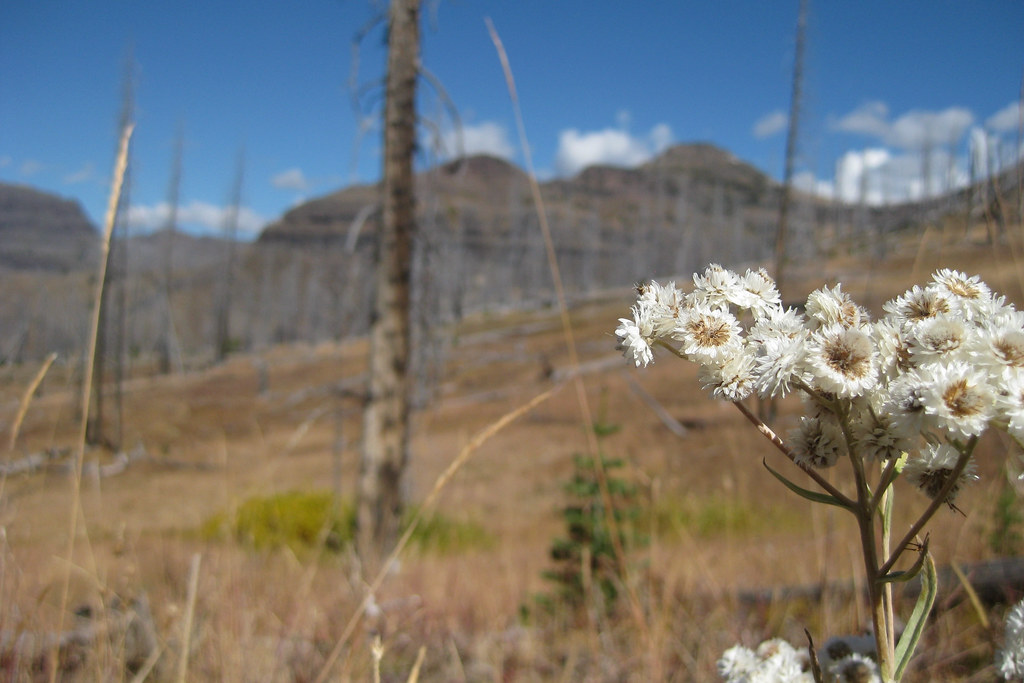
Commotion of course immediately ensued.  I was successful in following the buck as he jumped forward five or ten feet but then all five of the animals in the immediate vicinity became impossible for me to tell apart as they grouped up.  A rifle is incredibly loud and I am sure they were a bit stunned by whatever it was, but did not scatter, but rather simply all began walking away.  I had no way of knowing whether I had successfully hit the animal nor, if so, which of them it might be as they were now all walking away slowly.  I became overcome with doubt as I watched six animals all walking away.  One appeared to possibly be limping but I could not be certain whether this might have been from a bad shot by me or something altogether different.  I did not dare take a shot at this animal in case I had in fact dropped the one I was aiming at and that may be lying dead in the tall grass out of sight.  I took a few deep breaths and felt the adrenaline surging in my veins reminding me of the power contained in the act of taking another animal’s life.
My brain was on overdrive as I collected my rifle and quickly moved downhill to get my pack. Â Justin had made double time up the hill upon hearing my rifle report and he appeared within minutes as I was beginning my journey to see if I hit or missed my mark. Â Doubt weighed heavily on my mind as I knew I had seen six animals walk away and up toward the ridgeline but I was still incredibly amped regarding the entire stalk, wait, and ultimately the shot. Â Justin later told me my eyes were very wide and I was talking a mile a minute.
We arrived at the location a few minutes later and as I had suspected, did not find an animal crumpled up in the dirt. Â The shot I had taken was at the end of my comfortable shooting range of 200 yards, was along a steeply sloping uphill trajectory, and had a very strong cross breeze blowing left to right. Â I told Justin of the deer that had the slight limp and that if in the event I had caused this injury I needed to be certain I could attempt to justify the situation so we set about tracking to look for blood. Â We were successful in following the group of animals fresh tracks in the dirt for well over a quarter mile and we found not a single drop of blood so we both felt comfortable in putting a period at the end of the sentence that was a very powerful stalk on a beautiful group of mule deer bucks.
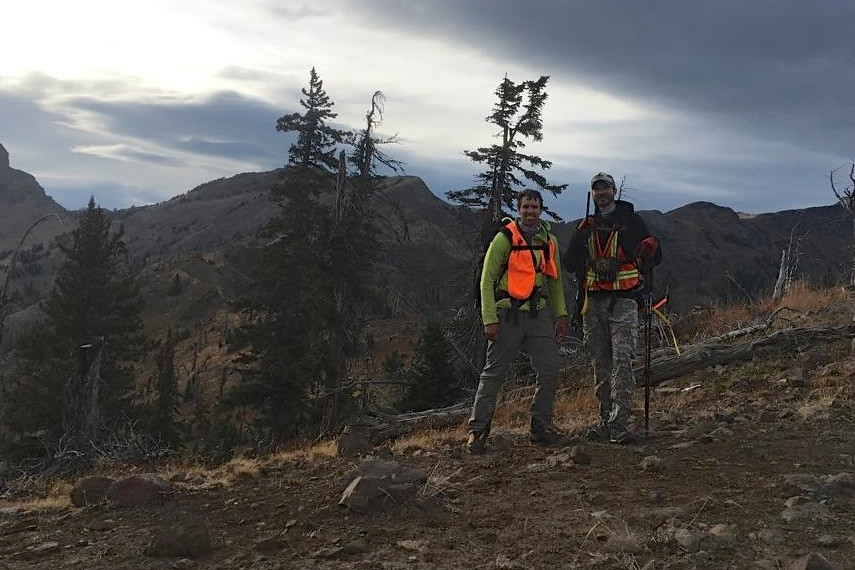
It was approaching 1700 at this point so as I began to come down off the high I was on from such an exhilarating although ultimately fruitless hunt we got back on track to make our way out of the drainage we had now completely hunted down and back up over 48 hours. Â We made our way along the knife ridge to the popular, horse packer, ridden drainage to find the main trail we’d hiked in on with the tracks of around six horses to now be completely obliterated by what must have been many more strings of animals. Â As we looked down valley I asked Justin how serious he was about making a camp and spending three hours the next morning hunting the upper end of a zone that had seen multiple groups of pack animals blasting through it. Â We thoroughly talked it over and decided that if we had the whole next day it would be worth a try but since we didn’t we might as well make just start in on the seven mile hike out and three hour drive back home so that we could spend Sunday with loved ones. Â We made half of the hike in the pitch black, deep in grizzly country so we turned on Justin’s iPhone and shared Alice’s Restaurant and a few other Arlo Guthrie tunes with any adjacent wildlife to let them know we meant no harm. Â Boots to dirt and tires to the road we arrived home at 1230 am, sans meat, but chock full of spectacular scenery, company, and experience.
